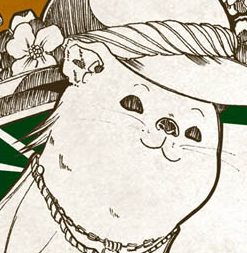
TYPOGRAPHER: PAULA SCHER
Paula Scher is a graphic designer based in New York. She is revolutionary, being the first woman to receive the Type Directors Club Medal, first female principal of Pentagram and also for working on branding projects for big companies. Well-known examples of such includes Windows 8, Tiffany & Co. and Citibank.
Liquid Identities
Scher names a successful brand identity as one that is liquid and fluid, rather than rigid, as information exists across different mediums and platforms. If the information and piece has to last long, then flexibility should be key to a successful brand identity.
Scher’s processes are extremely rational and her works are definitely alot more relatable compared to the past few typographers we’ve been looking at. Her identities are lodged deep into our subconscious. If you would just walk at a mall today, say Jurong Point or JEM, you would already see Citibank’s iconic logo. It’s not something we consciously think about, but definitely something that has wormed its way to the back of our head and can never forget.
She works with a very different platform for type. Designing for brands work extremely differently as compared to things like maps for train lines or magazines. The goal of crafting a brand identity is to burn the values and image of the company into the minds of a consumer. It is incredible how she is involved in the development for so for so many big brands.
Speaking for your work
One thing I found interesting is the section where Scher is quoted briefly about defending your work in the article ‘Get to know Paula Scher, titan of postmodern design’. Here is the quote:
“I think it’s very important for young designers to do two things. One: spend the first one to five years learning how to design and present design from somebody who is terrific at it. Having that basic understanding will carry you through the rest of their career. The second is this: develop the ability to explain, defend, and promote your work. Those are the two most important things.”
This hit a little hard considering this week in Typography class, we just went through how we should give and receive design critique. Being able to explain and sell your idea and concept is most definitely a major part of design. I find it hard to learn when to step in to defend my works as well, as it’s definitely just much easier to smile, nod and accept whatever that comes this way.
It may not be as applicable for now since lecturers and fellow classmates tend to suggest things that mean well for you and even sometimes ways for you to improve your work, but I do see the need to justify and defend our works in the future when there is a need to get your works seen (and where necessary), especially so in early stages of conceptualization where it’s still difficult to visualize an end product but you have to convince them to give you the funds to make it work.
An inspiration
Scher is definitely an inspiration as well for being one of the few female designers and leader in a male-dominated industry as well. Rather than letting herself be defined by gender, she identifies as a designer. Personally, I find the way she commits herself to her work extremely admirable!











































